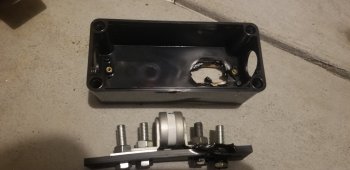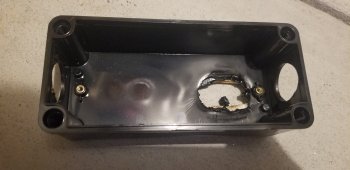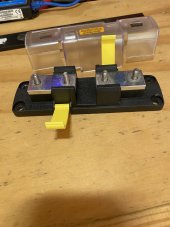

Had this 400A 160VDC T- Class fuse and holder on my negative lead attached to 4/0 copper cable for about 6 months. This is on my 30kWh battery bank, 48V. Regularly charged at 8kW with max DC current around 175A (really it's less since charging voltage is max of about 57V).
Worked fine, though got fairly warm, until a couple days ago when the inverter thought there was no longer any battery.
The plastic backer, to which the fuse lugs were attached as an insulating standoff to the fuse holder body, melted on one side. Perhaps I'm wrong about the regular capability of this fuse and its rating? I'm just glad it didn't start a fire.
Anybody have a suggestion of what kind of fuse and holder would be rated for my battery bank? Max the inverter can push or pull is 185A.




